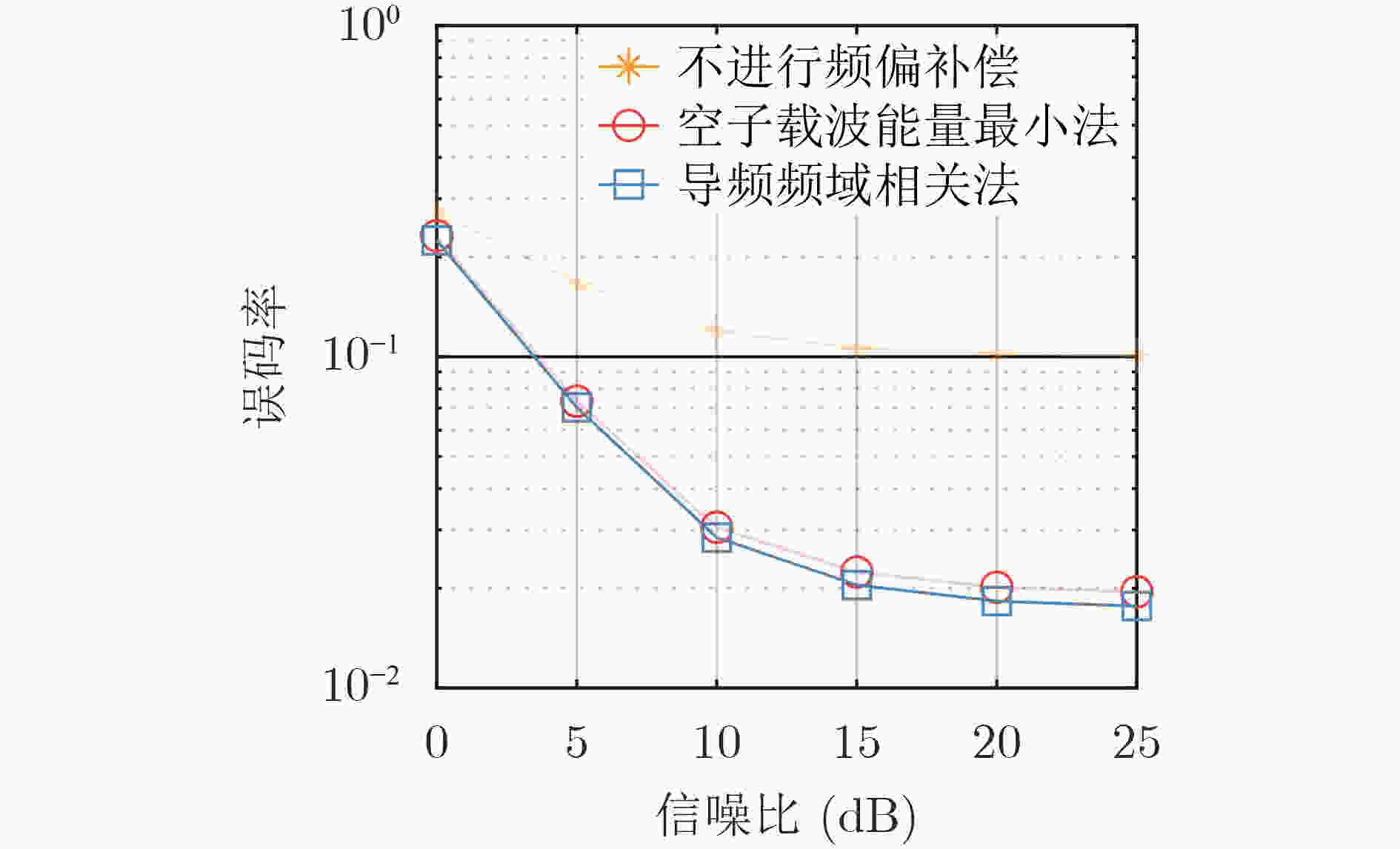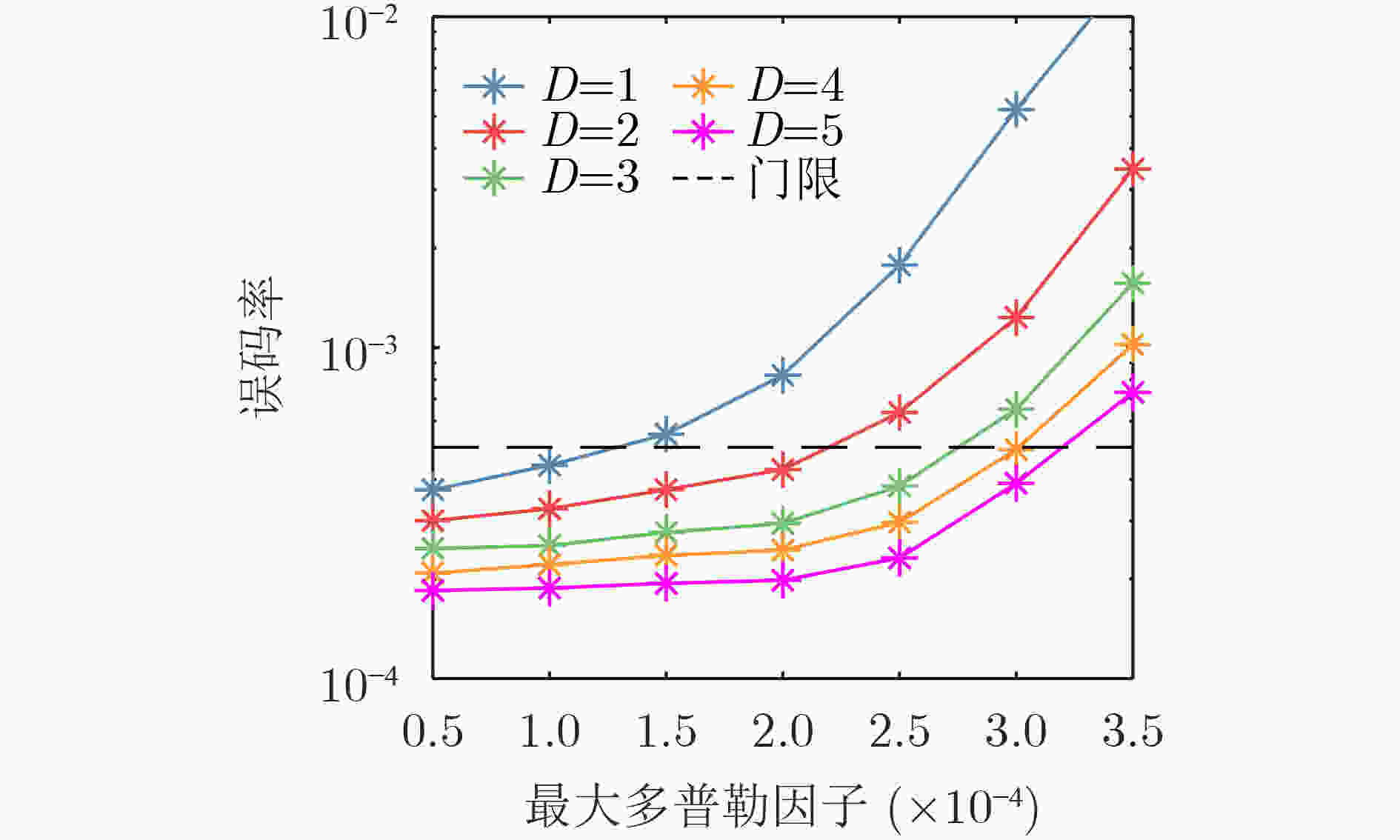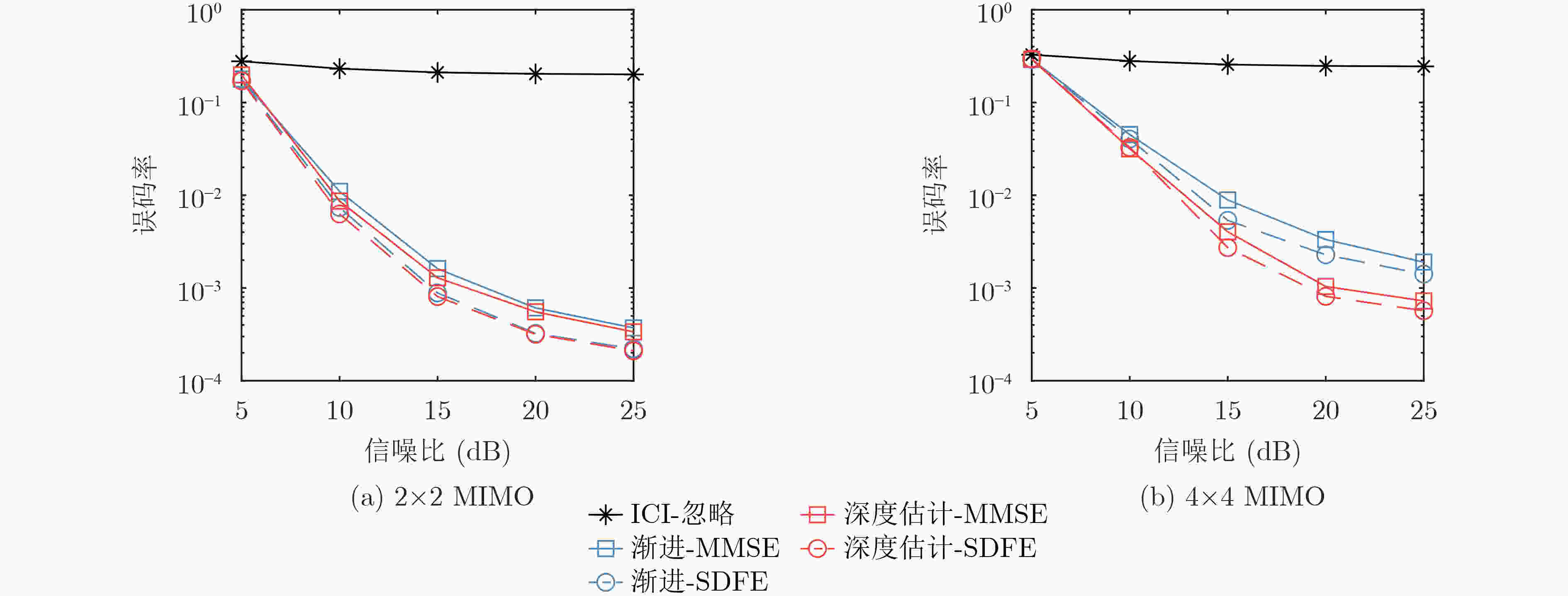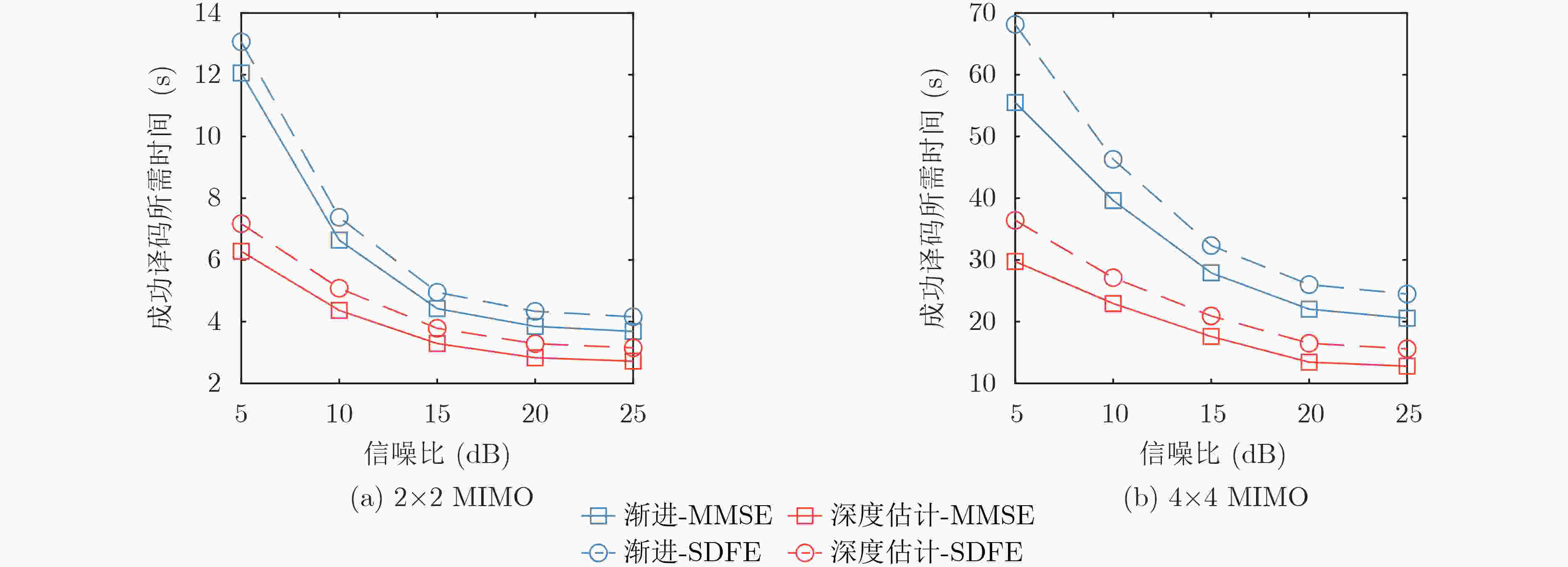MIMO-OFDM Underwater Acoustic Communication Receiver Based on Intercarrier Interference Depth Estimation
-
摘要: 多输入多输出正交频分复用(MIMO-OFDM)水声通信系统中,由于子载波间干扰(ICI)对信号的影响程度未知,导致接收处理时干扰消除不完全或计算复杂度高。针对这一问题,该文提出一种迭代的基于子载波间干扰深度估计的MIMO-OFDM接收机。该接收机使用导频频域相关对每个发射信号的子载波间干扰深度进行估计,信道估计时利用估计出的干扰深度重建各个信道的频域矩阵,避免对不同信道选择相同的干扰深度,在自适应信道变化的同时降低了计算复杂度。此外,将判决反馈均衡引入MIMO-OFDM水声通信系统,利用已均衡出的符号信息消除子载波间干扰。仿真结果表明,该接收机相比于干扰深度渐进的接收机,译码成功所需的时间更短。
-
关键词:
- 水声通信 /
- 多输入多输出正交频分复用 /
- 迭代接收机 /
- 载波间干扰 /
- 判决反馈均衡
Abstract: Due to the unknown influence of Inter-Carrier Interference (ICI) on the signal in Multiple Input Multiple Output Orthogonal Frequency Division Multiplexing (MIMO-OFDM) underwater acoustic communication systems, the receivers have problems with incomplete interference cancellation or high computational complexity. To solve this problem, an iterative MIMO-OFDM receiver based on ICI depth estimation is proposed. The pilot frequency domain correlation is used to estimate the ICI depth for each transmitted signal. In channel estimation, the frequency domain matrix of each channel is reconstructed by using the estimated interference depth, which avoids selecting the same interference depth for different channels. Therefore, the proposed receiver can self adapt to channel variations and reduce computational complexity. Furthermore, decision feedback equalization is introduced into the MIMO-OFDM underwater acoustic communication system, and the equalized symbols are used to eliminate ICI. Simulation results show that the correct decoding time of the proposed receiver is less than that of the ICI-progressive receiver. -
表 1 水声通信系统仿真参数设置
仿真参数 符号 值 最低子载波频率 ${f_0}$ 9 kHz 信号带宽 $B$ 6 kHz 子载波数 $K$ 1024 OFDM符号周期 $T$ 170.65 ms 子载波间隔 $\Delta f$ 5.86 Hz 零后缀长度 ${T_g}$ 15 ms -
[1] HUANG Jianguo, WANG Han, HE Chengbing, et al. Underwater acoustic communication and the general performance evaluation criteria[J]. Frontiers of Information Technology & Electronic Engineering, 2018, 19(8): 951–971. doi: 10.1631/FITEE.1700775 [2] LI Baosheng, HUANG Jie, ZHOU Shengli, et al. MIMO-OFDM for high-rate underwater acoustic communications[J]. IEEE Journal of Oceanic Engineering, 2009, 34(4): 634–644. doi: 10.1109/JOE.2009.2032005 [3] TAO Jun and ZHENG Y R. Turbo detection for MIMO–OFDM underwater acoustic communications[J]. International Journal of Wireless Information Networks, 2013, 20(1): 27–38. doi: 10.1007/s10776-012-0182-4 [4] WANG Shuche, HE Zhiqiang, NIU Kai, et al. New results on joint channel and impulsive noise estimation and tracking in underwater acoustic OFDM systems[J]. IEEE Transactions on Wireless Communications, 2020, 19(4): 2601–2612. doi: 10.1109/TWC.2020.2966622 [5] 强夕竹, 乔钢, 周锋. 一种改进的水声正交频分复用稀疏信道时延估计算法[J]. 电子与信息学报, 2021, 43(3): 817–825. doi: 10.11999/JEIT200660QIANG Xizhu, QIAO Gang, and ZHOU Feng. An improved delay estimation algorithm for underwater acoustic OFDM sparse channel[J]. Journal of Electronics &Information Technology, 2021, 43(3): 817–825. doi: 10.11999/JEIT200660 [6] BERGER C R, ZHOU Shengli, PREISIG J C, et al. Sparse channel estimation for multicarrier underwater acoustic communication: From subspace methods to compressed sensing[J]. IEEE Transactions on Signal Processing, 2010, 58(3): 1708–1721. doi: 10.1109/TSP.2009.2038424 [7] HUANG Jianzhong, ZHOU Shengli, and WANG Zhaohui. Performance results of two iterative receivers for distributed MIMO OFDM with large Doppler deviations[J]. IEEE Journal of Oceanic Engineering, 2013, 38(2): 347–357. doi: 10.1109/JOE.2012.2223991 [8] LI Hua, DONG Yuanyuan, GONG Caihong, et al. A non-gaussianity-aware receiver for impulsive noise mitigation in underwater communications[J]. IEEE Transactions on Vehicular Technology, 2021, 70(6): 6018–6028. doi: 10.1109/TVT.2021.3079469 [9] ZHAO Shiduo, YAN Shefeng, and XI Junyi. Bidirectional soft-decision feedback equalization for OFDM systems[J]. IEEE Wireless Communications Letters, 2020, 9(8): 1283–1286. doi: 10.1109/LWC.2020.2988659 [10] HWANG S J and SCHNITER P. Efficient multicarrier communication for highly spread underwater acoustic channels[J]. IEEE Journal on Selected Areas in Communications, 2008, 26(9): 1674–1683. doi: 10.1109/JSAC.2008.081207 [11] LEUS G and VAN WALREE P A. Multiband OFDM for covert acoustic communications[J]. IEEE Journal on Selected Areas in Communications, 2008, 26(9): 1662–1673. doi: 10.1109/JSAC.2008.081206 [12] HUANG Jianzhong, ZHOU Shengli, HUANG Jie, et al. Progressive inter-carrier interference equalization for OFDM transmission over time-varying underwater acoustic channels[J]. IEEE Journal of Selected Topics in Signal Processing, 2011, 5(8): 1524–1536. doi: 10.1109/JSTSP.2011.2160040 [13] HUANG Jianzhong, ZHOU Shengli, HUANG Jie, et al. Progressive intercarrier and co-channel interference mitigation for underwater acoustic multi-input multi-output orthogonal frequency-division multiplexing[J]. Wireless Communications and Mobile Computing, 2014, 14(3): 321–338. doi: 10.1002/wcm.1251 [14] QIAO Gang, BABAR Z, ZHOU Feng, et al. Low-Complexity progressive MIMO-OFDM receiver for underwater acoustic communication[J]. Symmetry, 2019, 11(3): 362. doi: 10.3390/sym11030362 -






 下载:
下载:






 下载:
下载:
